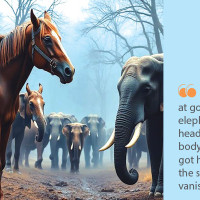- Friday, 26 December 2025
Gosainkunda: A Trekker’s Paradise
Nepal has myriad deities, religions, cultural traditions, and a panoramic natural blend with a unique landscape. When it comes to holy places, Nepalese should be proud of them. Each sacred place is revered and chaste and has a story and history. 'Gosainkunda' of Rasuwa is one masterpiece of holy heaven for pilgrims who have embraced magnificent natural heritages since immemorial times. Janai Purnima (Full Moon in August) and Dashahara (a particular day in June) of Jestha are the two D-Days most visited.
The 'Gosainkunda lies in Langtang National Park. It is located in Gosaikunda Rural Municipality of Rasuwa District in Bagmati Province at a height of 4380 m from sea level. The place, east of District Headquarter Dhunche, can be reached through Ghattekhola, Dhimsa, Chandanbari (Singompa), Cholangpati, Lauribinayak, and Ganesh Gaunda. Visitors can also get there via the Sundarijal, Chisapani, and Kutumsang routes. However, the mesmerising natural beauty is present every day on both routes. It has no road access yet.
It is one of Nepal's alpine freshwater oligotrophic lakes, with a surface of about 34 acres. There are other lakes in Gosaikunda, such as Gosaikunda, Saraswatikunda, Bhairabkunda, Ganeshkunda, and Suryakunda. With all the associated lakes, the total area of Gosaikunda is about 1,030 hectares. The site was declared a Ramsar Site on September 23, 2007. A Ramsar site is an international treaty for the sustainable use and conservation of wetlands. The lake of Gosaikunda melts and sips down to form the Trishuli River and remains frozen for about four months in winter, from December to March. There are 108 big and small lakes in this alpine range.
The stunning and iconic views of the mountains like Annapurna II, Hiunchuli, Manaslu, Ganesh, and Langtang Lirung make visitors forget about the strenuous trek under the vast blue sky. Not just as a holy place, this is equally famous for adventure lovers and flora and fauna researchers. Many unprecedented aromas can be expected en route to the place, but some strong and pungent odours could prove pernicious to health for some. They could cause headaches, vomiting, and eye burn sensations. Some consider it a bad omen, and some find it challenging to proceed. If somehow you proceed, the rare red panda and Assamese monkeys could be not-to-be-missed sights.
The name 'Gosainkunda' is derived from the Sanskrit word 'Goswami', later distorted to 'Gosai', where Go means cow and Swami' means master or a person with many cows. Also, Go means 'Indriya', where the master is 'Jitendriya'. Gods, ascetics, and saints fall under the Jitendriya category, and the most powerful is Shiva or Shankar.
The origin and importance of this lake can be seen in Bhagavatgeeta, Vishnu Puran, and Mahabharat. All these books talk about "Samundra Manthan", which mainly discusses the lake's origin, how the Kalkut venom was born, and how Shiva's neck got bluish when consumed. Since then, Shivaji has been greeted as Nilkantha. After the venom got intolerable, he went towards North with his trident (trishul) on the shoulder, thinking Gauri lay there in the Himalayas. Even then, the pain did not pacify, so he struck the foot of the Dharmapad with his colossal Trishul, which made the water come out from the mountain. Then he relieved the pain with that water and slept there. The three originated currents, Brahma, Vishnu, and Rudra, were called Triganga.
Articles claim that the places en route to Gosainkunda got their names when Lord Shiva went on his first visit to Kalkut, Gosainkunda. In contrast, some others believe that when Shivaji beheaded Lord Brahma, the sin rendered him leprous, and for penance, he went towards Gosainkunda, and on his way, the places were named as per his deeds.
Like the people, the Kings are also said to have voyaged to Gosainkunda. The extant history papers reveal that Yakshya Malla went on his voyage in 1559. According to the inscription at Rani Pokhari, Pratap Malla, the builder, in reverence of his queen, also brought sacred water from there with water from various holy places.
In 1737 BS, Pathibendra Malla and Mahibatindra Malla also went to Gosainkunda. After his victory over Nuwakot, Prithvi Narayan Shah also went for the bath. He established a trust for the food and shelter of the pilgrims. After getting dissatisfied with the Sugauli Treaty in 1826 AD, Amar Singh Thapa, the patriot, went to Gosainkunda for salvation.
A Tamang used to be an ardent devotee of Devi in Satya Yug, at the place possessed by Gosainkunda now. Day in and day out, he used to worship. Once, he thought of making a monastery, so he went to a sea cobra for help. Finally, a deal was made among them, which said that the serpent would help him by providing all the materials for the construction, but at last, after the construction was done, Tamang would have to be the food for the serpent. The work started, and the Tamang informed everyone that no one would come to the monastery before it was ready and that no one would disturb him.
On the other hand, the snake, on the suspicion that the priest would take flight, encircled himself around the monastery and inserted his head inside the door to eat him. But the priest Tamang, with his Tantra's help, gulped down the snake until someone entered the monastery. The Tamang retorted by releasing the tail of the snake. The snake of this tale is still believed to be waiting for the offspring of the priest Tamang. So, they prefer not to go to the Gosainkunda.
Another fable says that a sorcerer, Tamang, thought of fighting with the snake in the pond during the Satya Yug. He told his wife, "Let me go inside the pond. I will fight with the snake and bring him out while you wait here at the edge and play the drum. When I return, sprinkle this Akshyata over me and keep playing the drum." But after a heavy scuffle, when the Tamang came out rolled with the snake, the wife, thinking her husband was defeated, fled, leaving the drum and the Akshyata. Then, the snake killed the Tamang inside the pond. So, the Tamangs do not go inside the pond for the bath.
The places and names that appear on postage stamps are the nation's identity and the things of pride. Gosainkunda follows that same trend when appearing on the tickets. On June 11, 1970, the picture of Gosainkund by artist K.K. K.K.Karmacharya was published, of dimension 36x25.5 mm and denomination five paise. The Government Printing Bureau, Tokyo, printed 100,000 copies.
It is still believed that pure water from the pond flows to the Kumbheshwar Temple of Patan from Gosainkunda. So, a grand mela is organised at the temple, just like in Gosainkund, on the day of Janai Purnima. Lord Shiva of Pashupatinath is believed to have gone to Gosainkunda on the eve of Janai Purnima. So, the temple remains closed on this day. A small pond in the hills of Mahadev Pokhari Hill of Dhulikhel is also worshipped as Gosainsthan.
Gosainkunda is an astounding place, an emblem of beauty and faith. But it is far from the eyes of most of us. The programmes for developing and preserving the place should not just be limited to files and folders but should come forward. The offerings of the pilgrims should be made appropriately transparent and utilised. Awareness is to be created for the betterment of the place. A tax system is to be implemented, and the money from the tax should be utilised for its protection and development.
The study and research of the inscriptions in Rasuwa could help to find more facts about the holy lake. With the latest technologies, the place could be unveiled to the world, and tourism could be boosted. Documentaries, films, blogs, websites, journals, and articles could show the place to many new eyes and be made known to many others.
(The author is a scholar and researcher.)



-original-thumb.jpg)












